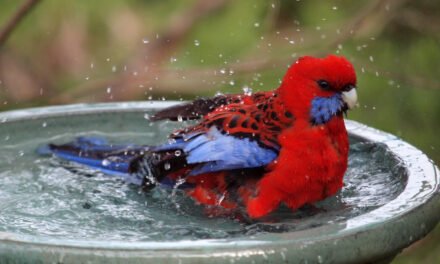On ANZAC Day last week, we posted stories about some of the soldiers whose names are etched on the Daylesford Cenotaph.
This History File is the story of how the Cenotaph came to be in Burke Square – a schismatic story involving as it did the two biggest churches in Daylesford, was the official opening of the war memorial on the corner of Vincent, Albert and Howe streets on 11 November 1929.
Originally the Council had planned on erecting memorial gates at the entrance to the Lake Reserve but a monument in Burke Square on the corner of Vincent, Albert and Howe Streets was preferred. Council accepted the tender of local stonemason H.A. Place for its construction. Place’s masonry yard was in Raglan Street near Smith Street, where remnants of discarded stones can still be seen if you peer through the fence.

Brigadier General “Pompey” Elliot
It was decided to invite the much loved and personally troubled Brigadier General “Pompey” Elliot to give the opening speech. But before this opening could take place a priest would be called upon to bless the stone obelisk. But who would it be?
Hepburn had built their own memorial gateway and this was to be opened on the same day, 11 November 1929, by Major General Elliot, but in a civic ceremony with no religious involvement.
The RSL had suggested that the Daylesford ceremony also be a civic one, but their wishes were pushed aside. The arrangement for the religious side of the Daylesford ceremony was organised between the churches by a committee known as the Brothers Fraternal, but discussions descended into less than fraternal bickering.
Father Collins, the Catholic priest at St Peter’s, wrote to the Daylesford Advocate complaining that the service was being run by a Protestant minister. In the same issue, the Protestants decried a civic service, saying that if it was, they wouldn’t attend.
Shortly after, the Brothers Fraternal wrote to the editor objecting to Collins’ letter and saying the Catholics had surveyed the program and had re-arranged it to their own liking. They added “the memorial would have no more significance than a pagan obelisk erected in a heathen country if the religious part of the ceremony was omitted”. Father Collins of course replied and said “the pagan monument” should have a crucifix placed on top of it.
By October 28th invitations had been sent out and a holiday gazetted. Returned soldiers who still had uniforms were to form a guard of honour but it transpired that not many still had uniforms and the Defence Department were not in the business of lending uniforms for these occasions. The Hepburn Committee asked that the guard of honour be available for their ceremony later the same day.

Archbishop Mannix
On 11th November, Elliot arrived and gave his speech, and on the same day it was announced in the paper that Archbishop Mannix was visiting Daylesford. During his welcome address, Father Collins mentioned that Catholics had been excluded from both services.
In the Melbourne Catholic newspaper, The Advocate, the full text of Collins’ address was printed and included the following: “For the ceremony for the unveiling of the Soldiers’ Memorial it had been decided to adopt a frankly Protestant service. Catholics could not take part in a non-Catholic service” and also “Catholics had contributed towards the cost of the memorial, and yet a program had been adopted on the occasion of the public unveiling that excluded Catholics from taking part”.
The ceremony duly went ahead with no bolts of divine justice raining down.
During his visit Brigadier General Elliot had mentioned that he had been nursed three times by Dr Trewhella’s wife, Agnes, during the war, once at Gallipoli and twice in France. Agnes Trewhella was matron of the Daylesford hospital at the time.
The Daylesford Advocate also reported on Elliot’s speech at the Hepburn memorial where he disagreed with Chaplain Captain Yeo who had said “war was brutalising, degrading and devastating, and should be avoided at all costs”. Elliot disagreed and said that “Lessons could be learned – namely devotion to duty at all costs and the willingness to save our fellow man.”





